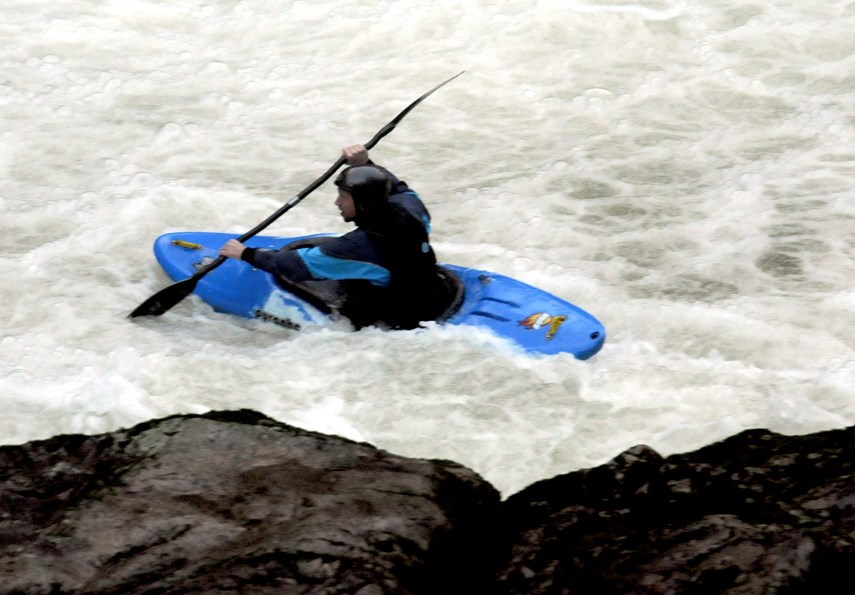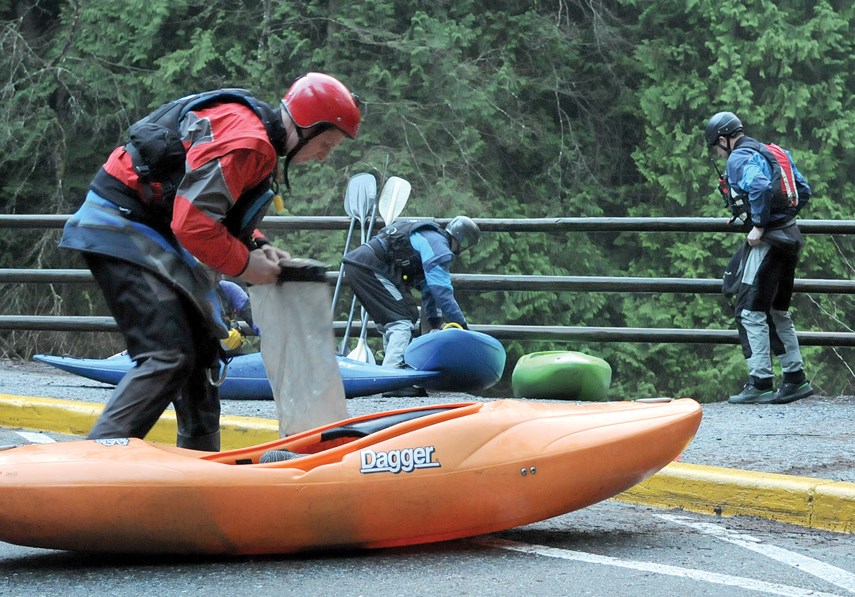This story has been amended.
A swift water rescue team from North Shore Rescue has recovered the body of a man who died Monday while kayaking the fast-flowing Capilano River.
Rescue team members pulled the kayaker’s body out of the river at first light Tuesday near Klahanie Park, just north of Marine Drive.
The kayaker has been identified as a 48-year-old man from North Vancouver.
The recovery of the man’s body marked a tragic end to dramatic rescue attempts in swollen, swift-running river late Monday afternoon.
Emergency crews including police, both North Vancouver and West Vancouver fire and rescue and the Coast Guard were called out at around 3:30 p.m. to a report of a kayaker in distress in the river near the Capilano Suspension Bridge.
When the man was first spotted, he was still in the kayak, said Cpl. Richard De Jong, spokesman for the North Vancouver RCMP. The next time he was seen, he was in the water.
“At some point he became separated from his kayak and was last seen moving down the river,” said De Jong.
Firefighters searched on both banks of the river, from an area starting near the suspension bridge down to the mouth of the river near Park Royal.
The Coast Guard’s hovercraft was also sent to the mouth of the Capilano River to assist in the search.
The Coast Guard later recovered the man’s kayak out in the water in the Ambleside area.
As darkness fell, a North Shore Rescue crew with Talon Helicopters managed to spot the body of the kayaker in the river from the air. The man’s body was pinned against a log jam under a foot of churning white water.

Searchers deemed conditions too dangerous to attempt a recovery Monday evening.
By Tuesday morning, water levels in the Capilano River had fallen 70 per cent, said Peter Haigh, search manager for North Shore Rescue.
Five members of North Shore Rescue suited up in swift water gear and waded into the river to retrieve the kayaker’s body, which had been turned over to the coroner Tuesday morning.
Rescuers said the tragic outcome is a reminder not to try any kind of extreme winter sports alone.
High water conditions such as those in the Capilano on Monday can attract kayakers in search of a thrill, said Haigh. “The adrenaline rush to cheat death is the excitement and the motivation,” he said. “But if you’re doing it on your own that is not a very smart thing to do.”
“He made that choice to kayak in those conditions. … It is a risk being in the water at this time of year,” said De Jong. “Be with a buddy. Go with someone who can assist you if something does go wrong.”
According to stream flow data posted by Metro Vancouver, the water levels were 4.5 metres deep in the Capilano River Monday afternoon, with water flowing at a rate of about 500 cubic metres per second - about 15 times the normal volume. By Tuesday morning, water levels had dropped to just over 2 metres.
The name of the kayaker had not been released Tuesday morning. De Jong said family members have been notified.
This is a corrected story. An earlier version incorrectly stated the water flow rate at five cubic metres per second.



